The Best Spanish-Speaking Countries for Nomads
November 27, 2024
As languages go, English is a pretty useful one, owing to the fact that the British Empire used to control most of the world. And now, with the hegemony of the US, it’s the lingua franca wherever you go.
We’ve got a guide on 15 expat-friendly countries that speak English. These are all ideal places for native English expats.
However, if you solely rely on English, you’re often locking yourself out of many great opportunities. There are other language groupings so large that people don’t really need to bother learning English at all.
Spanish is one such group.
There are Spanish-speaking countries on every continent. Spanish is the fourth most spoken language in the world, making it one of our top languages to learn for business.
Spanish is also among the easiest languages for an English speaker to learn and is doable with six months of concentrated effort.
So, if you actually want to explore the full breadth of possibilities out there, learning Spanish is definitely the way to go about it.
As a reward, you’ll be able to gain access to new citizenships (as many Spanish-speaking countries have a language requirement for citizenship) and gain greater access to a wide array of countries all over the world.
If you want to establish residency or citizenship in a Spanish-speaking country, get in touch with us today. We’ll handle everything, making sure you go where you’re treated best.
7 Best Spanish-Speaking Countries to Live in (for Nomads)
Puerto Rico

Some people consider Puerto Rico to be the 51st state of the US, thanks to its status as an overseas territory. Puerto Rican citizens have been considered US citizens for over a century.
It has all the flair of seeming like a Latin American country, but if we were to consider it amongst this group, it would have the highest GDP per capita and the most advanced economy.
With Puerto Rico, you can have many of the benefits of remaining in the US sphere of influence while also enjoying the Latin American warmth.
Unsurprisingly, in order to live in Puerto Rico without having random obstacles in your day-to-day life, you will have to know Spanish and English.
For some – but not all – US businesses and their owners, Puerto Rico is the ultimate tax haven.
If you move there via certain programs, you can reduce your tax by up to 90%. You can have as little as a 0% income, dividend and capital gains tax rates. Plus, you won’t be subject to US Federal taxes on any income earned in Puerto Rico.
And if you’re an entrepreneur, you’ll be eligible for a corporate tax rate as low as 4%. But, of course, there are caveats, such as becoming a bona fide resident and ensuring that your business services are performed in Puerto Rico and then exported.
In theory, even a US resident without citizenship could also enjoy these stellar tax rates.
This territory has a vibrant tradition born of its rich history with Spain, its Caribbean heritage and its connections to the United States.
Mexico
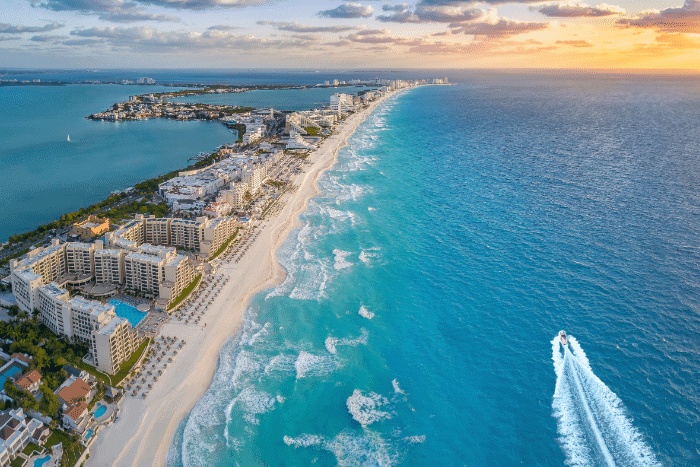
When people think about Mexico, often their first thoughts are tequila, deserts and siestas in the middle of the day. Yet, much gets lost in this stereotype. Mexico is that and so much more.
Just to put it into context, Mexico can fit half of the surface area of the EU into its borders. And each of its 31 states has a different culture, cuisine, climate and natural offerings.
If you want the hustle and bustle of a metropolis, you can go to Mexico City. If you want a beach villa, you can go to Tulum. If you enjoy fishing, there’s Puerto Vallarta. And if you enjoy mountains, you can go to Queretaro — there are jungles, forests, beaches, deserts and everything in between.
It’s also worth mentioning that moving to Mexico won’t cause too much of a culture shock. The US expat community is rather large, and there are many restaurant chains like you would see in the US.
However, if you have no interest in restaurant chains, there is enough variety in the food in Mexico to keep you trying new things for a lifetime.
As a matter of fact, ten years ago, Mexican cuisine was included in the United Nations Educational, Scientific and Cultural Organization (UNESCO) list of Intangible Cultural Heritage of Humanity – yes, it’s that good!
We’ve been saying for a while that US citizens should look into living in Mexico. The process of gaining residency, or even citizenship, is rather straightforward.
However, as with many Latin American countries, taxes aren’t particularly great, and they do require some strategic planning.
Colombia
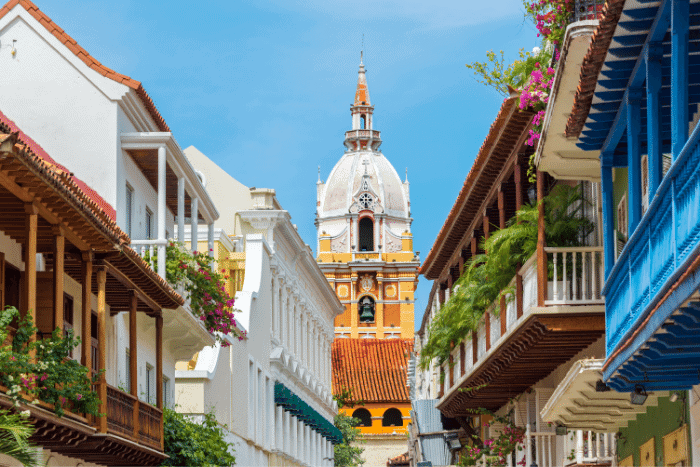
Until recently, not that many people talked about Colombia. But for those in the know about Spanish-speaking countries, it’s a hidden gem with beautiful beaches, mountains and jungles.
From an economic standpoint, Colombia is the second freest economy in South America and is set to develop even more in the future.
We’ve previously written about the numerous benefits of living in Colombia. In short, it’s a country with a unique culture, fantastic cuisine, cheap cost of living and a lot of business opportunities.
Moving to Colombia, and even gaining citizenship, is also rather straightforward. But, we would not advise you to live there permanently as, like Mexico, you’ll be subject to some high taxes.
So, while it’s a fantastic country, we think it should be considered under the trifecta method.
Just watch our video on living like a king in Bogota to see just how great a nomadic life in Colombia can be.
Peru
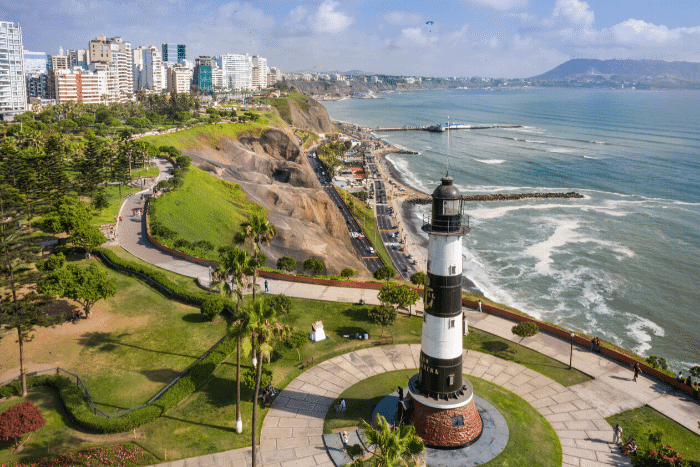
Peru is right in the middle of the action. It’s close to Chile, Colombia and Ecuador, so it can easily serve as a Latin American hub if you have business dealings there.
On top of that, the country has a lot to offer itself, such as beautiful beaches, impressive Andean highlands and magnificent rainforests. Peru offers plenty of amenities and outdoor activities, all for a remarkably low cost of living.
It’s also a rather open country. And it’s very welcoming to foreigners. You’ll never feel like an outsider as people make you feel right at home.
However, the government is quite different from the people. It’s not the most tax-friendly nation if you live there on a permanent basis.
Additionally, the requirements for immigration are being raised behind closed doors. That means that while the law says one thing, you’ll likely have to have more than the minimum requirements to be accepted.
With all that said, the best city to live in Peru is the capital, Lima. And if you want to be even more specific, we would suggest the district of Miraflores – it’s the most affluent region in the city and has lots of hotels, bars, restaurants and department stores.
Argentina
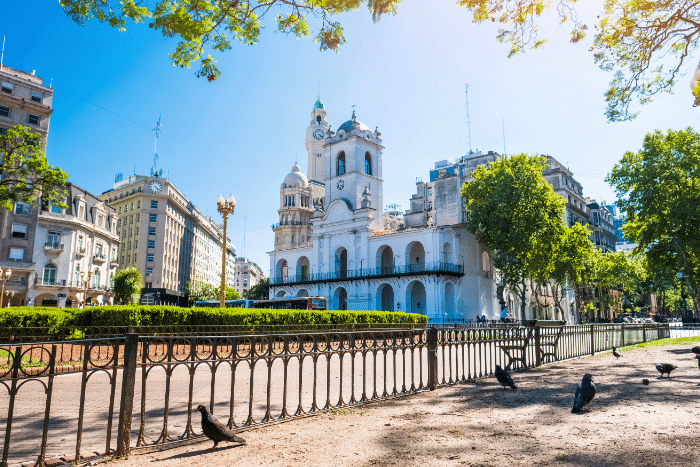
If you would like a place where life is lived with passion and raw emotion, for good or ill, then living in Argentina is for you.
Whether its tango, wine or the succulent prime cuts of beef, there’s something in its vast culture to make you fall in love with this country.
It’s also just as large and diverse as it looks on the maps. You can live in vineyards, beaches, or mountains – there’s something for everyone.
Overall, it’s a perfect place to feel at home, far away from home. Around 85% of Argentina’s population is of European descent, mostly from Spain and Italy. It has a distinctly European flavour but is still very much Latin American as well.
Costa Rica and Panama
For some more tax-friendly and even tax-neutral options, you should go to Central America.
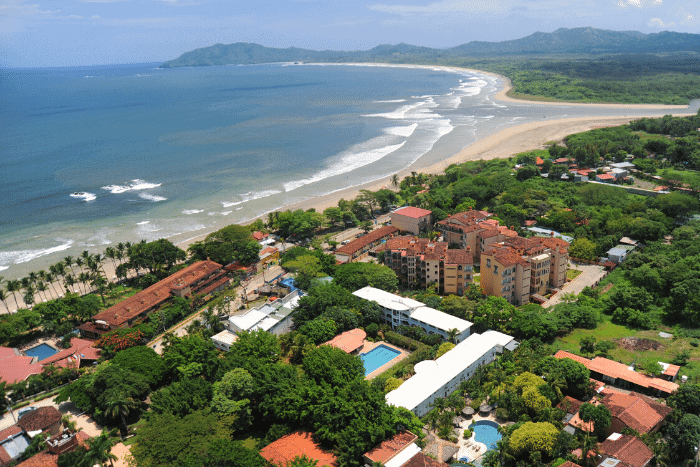
Costa Rica
Costa Rica’s main selling points are its beautiful beaches rather than its capital. If you do choose to live there, the requirement is to be able to prove an income of $2,500 per month. However, applications can often take years, only for them to be arbitrarily denied.
An easier route is the country’s digital nomad visa, which you can apply for if you have an income of at least US$3,000. This is not a residence permit and it’s not a path to residency. But, it’s an easy way to get into Costa Rica and live there for no more than two years.
Costa Rica operates a territorial tax system wherein residents and non-residents are only taxed on their Costa Rican-sourced income. So, if you don’t have any income that comes from this country, it may well be worth it to consider living in Costa Rica from a tax point of view.

Panama
Panama’s capital, Panama City, is often considered the Miami of Central America due to the fast pace life and sweeping skyscrapers in a tropical setting.
Living in Panama City feels an awful lot like living in the US – both in its culture as well as its currency – as the USD is legal tender. And prices are higher than you would expect in that side of the world, though real estate is decently priced.
So, while it’s not the most exciting place in the world, the city does offer major benefits in terms of banking, investment and residency opportunities.
Don’t Overlook Spanish-Speaking Countries
Latin America is one of the world’s most important economic zones in the world. However, it’s often overlooked, thanks to headlines that focus more on illegal activities rather than economic productivity.
Partially, it’s this ill-gotten reputation that has stopped many expats from exploring the wide diversity available in these countries.
If you are willing to give it a try, there is plenty of opportunity from a business standpoint, as the economies there are finally picking up steam. And you will be spoiled from a quality-of-life standpoint as well. It’s not uncommon for upper-middle-class families to have cleaners, cooks, gardeners and personal assistants.
You can also enjoy nature alongside some of the most vibrant cultures — and that’s not even mentioning the food.
Live life on your own terms, not by the guidelines that the media tries to manipulate you into believing.
Best Spanish-Speaking Countries to Live in: FAQs
Mexico is often considered the best Spanish-speaking country for expats thanks to its diverse landscapes, rich culture and large English-speaking expat communities. The cost of living is relatively low and gaining residency or citizenship is straightforward. However, the best country for you comes down to your individual goals and preferences.
It really just depends on what you’re after, but Mexico, Costa Rica and Panama are highly recommended due to their friendly expat communities, beautiful landscapes and accessible residency processes. Colombia and Argentina are also popular for their vibrant cultures and affordable lifestyles.
Colombia stands out as the best Spanish-speaking South American country due to its mix of affordable living, economic opportunities and welcoming culture. Argentina is another strong contender for its European feel and diversity.
Mexico and Panama are among the easiest due to their straightforward residency programs and digital nomad visas. Costa Rica also offers accessible visa options, but its processes can sometimes be slow.
Find the Best Spanish Speaking Country for You
Spanish is one of the most spoken languages on earth. And if you’re thinking of living in Spanish-speaking countries, then it’s worth learning.
If you want to explore what it would take to move to a Spanish-speaking country, contact Nomad Capitalist today. We’re ready to help you strategise, weigh up your options and find the best path for you.


Is Grenada Safe for Visitors, Residents and Families?
Evaluating a nation for tourism, relocation or investment begins with a single, non-negotiable factor – safety. Security, from both a personal and financial point of view, is the foundation upon which all other considerations rest. And while it’s easy to assume that stability is a given in the developed world, recent challenges in countries like […]
Read more

Is Antigua Safe for Tourists, Families and New Residents?
Security is a cornerstone of any serious investment migration strategy. For high-net-worth individuals (HWNIs) and globally mobile families, it ranks alongside tax efficiency, political stability, and quality of life as a key driver in deciding where to live, invest or acquire a second passport. Too often, safety is assumed to align with economic development. Countries […]
Read more

Is St Kitts and Nevis Safe? Tips for Tourists and Residents
Safety is a non-negotiable factor for anyone considering whether a country is right for travel, relocation or investment. Overlooking such a vital consideration carries serious consequences, and the stark truth is that assumptions based on a country’s global image often fall short of reality. Cases in point include the following countries: The takeaway is clear: […]
Read more





